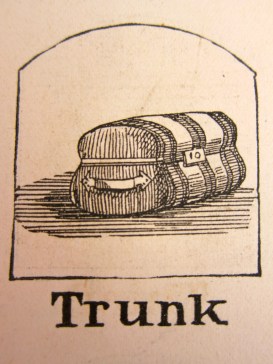Hanover Street, Boston, ca. 1872*
Tuesday Nov 30th Oakes A Oliver & self went to
Boston to the Webster funeral. Called at
Mr Orrs & Melinda went with me to see Selina
Selina & self saw the procession from A A Gilmores
room in Hanover St. We called on Pauline
and on Mrs Dorr Spent the evening at
Mr Butlers his mother brother & sister there
After a false start the day before, Evelina rode into Boston today – she and thousands of others, evidently. The city was hosting an official memorial service for Daniel Webster, the great senator who had passed away a month earlier. It was “a fair good day for the season”* so Evelina, Oakes Angier, and Oliver (3) had easy traveling.
Senator Webster was eulogized at Faneuil Hall, with a prayer led by Reverend Samuel Kirkland Lothrop, the pastor of Brattle Street Church in Boston, and the main oration delivered by George Stillman Hillard. Hillard, an admirer of the late Webster, was a senator in the Massachusetts Legislature. Harvard-educated, he had been a law partner of Charles Sumner, had edited – for a time – the Unitarian publication, Christian Register, and eventually would became the first dean of Boston University Law School. He was well known for his oratory.
Hillard spoke at length about Daniel Webster, his speech published and distributed afterwards. Many in the nation were still feeling the loss of the great senator, whether or not they had agreed with him. President Millard Fillmore, who was about to send his final State of the Union Address to Congress, included a brief lament of the man:
Within a few weeks the public mind has been deeply affected by the death of Daniel Webster, filling at his decease the office of Secretary of State. His associates in the executive government have sincerely sympathized with his family and the public generally on this mournful occasion. His commanding talents, his great political and professional eminence, his well-tried patriotism, and his long and faithful services in the most important public trusts have caused his death to be lamented throughout the country and have earned for him a lasting place in our history.***
Evelina and her sons didn’t attend today’s service, but they did observe the procession along Hanover Street, which is now part of the North End.
*Image courtesy of Boston Public LIbrary
**Oliver Ames, Journal, Stonehill College Archives, Arnold Tofias Collection
***Millard Fillmore, State of the Union Address, Dec. 6, 1852, courtesy of http://www.infoplease.com






![000100849[1]](https://evelinaames.com/wp-content/uploads/2014/08/0001008491.jpg?w=389&h=266)


